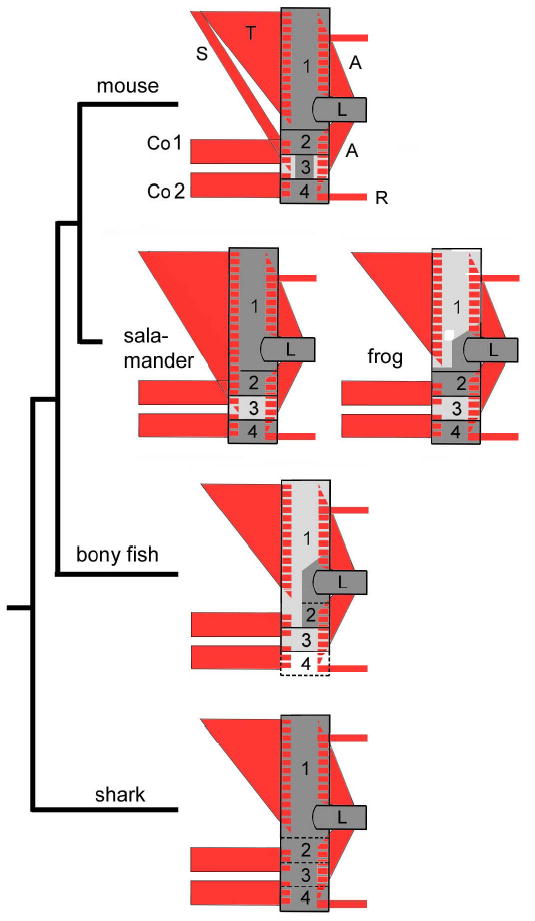Fig. 1.

Highly conserved neck muscle scaffolds (red) attached (hatched areas) on a shoulder skeleton (boxes 1–4) displaying variable dermal (light grey,d) and endochondral (dark grey, e) ossification type. Attachment regions (hatching) of the gnathostome trapezius muscle (T), 5,49, are e in sharks, salamanders5 and all amniotes but d in fish and frogs. S, sterno-cleido-mastoid; Co1,2, coraco-branchialis, -hyoideus; A, limb muscles; R, trunk muscles. Shoulder skeleton : 1. dorsal cleithrum (d) in bony fish (Polyodon5 or Amia 35), frog (Rana 36) and scapular region (e) in salamander 5, mouse and living amniotes. 2. acromio-coracoid (e) 3. clavicular region (d/d+e), in sharks5 bone is absent and its space taken by part of the scapulo-coracoid (stippled) 4. sternal region, comprising the sternum (e) or connective tissue (bony fish); L, limb skeleton.
